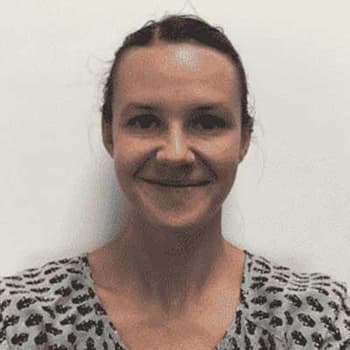Schizophrenia and schizoaffective disorder are closely related psychotic disorders. Learn more about the similarities and differences between these two conditions.
Article at a Glance:
- Schizophreniahas three categories of symptoms: positive, negative and cognitive
- Individuals with a schizoaffective disorder exhibit symptoms of schizophrenia as well as those of a mood disorder
- There are two types ofschizoaffective disorder: the bipolar type and the depressive type
- The treatment of schizophrenia and schizoaffective disorder consists of antipsychotic medications and psychotherapy
- Treatment for schizoaffective disordermay include mood and antidepressant medication in addition to antipsychotic medication.
Schizophrenia vs. Schizoaffective Disorder
Schizophreniaandschizoaffective disorderare mental illnesses that affect an individual’s ability to function in everyday life. Although there are many similarities between these conditions, they are considered separate disorders by the Diagnostic and Statistical Manual of Mental Disorders (DSM-5) — a comprehensive tool used to diagnose all known mental health conditions. Knowing and understanding different signs and symptoms of each condition can lead to the proper diagnosis and appropriate prescribed treatment plan. Several treatment options exist for treating schizophrenia and schizoaffective disorder that can enhance the quality of life for affected persons.
Schizophrenia Signs and Symptoms
Schizophrenia is apsychotic disorderthat affects the way a person thinks, behaves or feels. Licensed medical professionals use three categories to describe the symptoms of schizophrenia:positive, negative and cognitivesymptoms.
- Positive symptomsrefer to behaviors that cause a person to “lose touch with reality.” These may include hallucinations (seeing, hearing or feeling things that are not there), delusions (false beliefs), irrational thinking (patterns of disorganized thoughts) or unusual body movements.
- Negative symptomsinvolve the disruption of normal behaviors and emotions. For instance, these symptoms may include alack of satisfaction in everyday life, diminished facial expressions, speaking in a low tone of voice or even refraining from social activities.
- Cognitive symptomsimpair an individual’s decision-making abilities and mental agility, which in turn may affect learning and the ability to function in everyday situations.
Schizoaffective Disorder Signs and Symptoms
Schizoaffective disorderisdistinctfrom schizophrenia and other individual mood disorders such asbipolar disorderordepression. In particular, schizoaffective disorder can be distinguished from schizophrenia by several symptoms:
- Persistent mood behaviors
- Lethargy (lack of energy)
- Poor appetite
- Suicidal ideation
- Lack of motivation
- Problems communicating
Challenges in Diagnosis
In some instances, it is difficult to ascertain whether an individual has schizophrenia or a schizoaffective disorder. Schizoaffective disorder encompasses schizophrenia symptoms plus those of amood disorder. The two types of schizoaffective disorder that helpdistinguishthis disorder from schizophrenia are:
Treatment Can Be Life Changing. Reach out today.
Whether you are struggling with addiction, mental health or both, our expert team is here to guide you every step of the way. Don’t wait— reach out today to take the first step toward taking control of your life.
- Thebipolar type, which includes episodes of mania and sometimes depression
- Thedepressive type, whichinvolves persistent sadness or apathetic behavior.
Differences in Treatment
Depending on the diagnosis of either schizophrenia or schizoaffective disorder, there aretreatment optionsavailable for both.Some common treatmentsinclude:
- Antipsychotic medications
- Psychosocial treatments
- Coordinated specialty care
- Antidepressants
- Mood stabilizers
Schizophrenia Treatment
Antipsychotics,also known asneuroleptics, are prescribed to help patients with schizophreniamanage psychotic behaviorssuch as delusions and hallucinations. These medications are available in pill form or injectable forms and require administration by medical professionals. Common orally available antipsychotic medications for schizophrenia include:
- Chlorpromazine
- Fluphenazine
- Perphenazine
- Thioridazine
- Thiothixene
- Trifluoperazine
Injectable antipsychoticsare administered less frequently and have similar effects as their orally available counterparts. Some examples of injectable antipsychotics are:
- Apriproprazle
- Paliperidone
- Haloperidol
- Risperidone
Additionally, individuals may benefit from group or individualtherapy that focuses on improving self-worth.
Schizoaffective Disorder Treatment
Individuals who are diagnosed with schizoaffective disorderusually respond wellto antipsychotics such as paliperidone (Invega) or risperidone (Risperdal) for symptom management. Based on a depressive or bipolar schizoaffective disorder diagnosis,mood-stabilizersmay be prescribed, including:
- Lithium
- Valproic acid
- Divalproex
- Carbamazepine
- Lamotrigine
Antidepressantsmay also be prescribed to patients, including:
- Venlafaxine
- Duloxetine
- Desvenlafaxine
- Bupropion
Other treatments for this disorder may consist oftranscranial magnetic stimulation(TMS)orelectroconvulsive therapy (ECT). These therapies involve electrically stimulating the brain while an individual is under anesthesia. TMS or ECT are routinely performed in patients who have not responded to medication or psychotherapy.
Prognosis and Outlook
Although the outlook is hard to predict for both schizophrenia and schizoaffective disorder, symptoms can be managed with proper and ongoing treatment regimens. In individuals that only have experienced one psychotic episode, about27% of individualshave a resulting poor outcome, and most individuals have a good outcome or prognosis (42%). Unfortunately, relapse beyond a first psychotic episode occurs often for schizophrenic and schizoaffective individuals.
Anotherstudy showedthat 43% of schizophrenic patients were clinically remitted due to their symptoms, while 54% of schizoaffective patients were hospitalized. Recovery for schizophrenic patients was at nearly 6.5% but was higher in schizoaffective patients at 22.7%. Interestingly, both groups of patients were taking antipsychotics, whereas a majority of schizoaffective patients were on concurrent mood stabilizers and antidepressants.
If you or a loved one are living with schizophrenia or a schizoaffective disorder and co-occurring addiction, please contactThe Recovery Villagefor information about treatment options.








